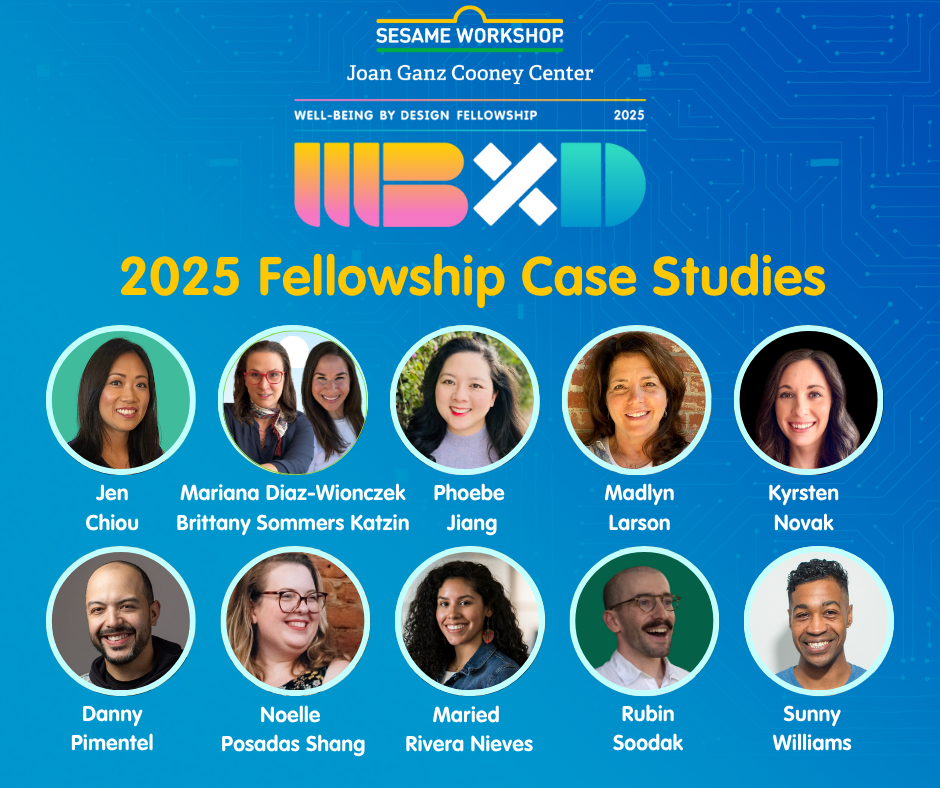How does a company that creates apps for young kids make sure that their target audience enjoys playing with their products? We asked Jason Krogh, CEO of Sago Sago, to share his thoughts on playtesting as part of the development process.

Children are constantly experimenting. It’s ingrained in everything they do, and it’s how they learn. The process is full of humorous misunderstandings, setbacks, and successes that all lead toward mastery. And while it’s impossible to fully anticipate how children will react to something new, they can provide plenty of clues along the way. Which is exactly why playtesting our products is so important.
For our team, playtesting is how we make better products. But the basic principles apply to parents, teachers and anyone interested in evaluating a new app.
Putting our prototypes in the hands of a playtester is a critical moment. It comes at the end of many weeks toiling away over designs, mechanics, artwork and code. But none of this matters to our preschool friend: time to shed our egos, sit back and see what unfolds!
The first few moments that a child encounters a new app is an especially important indicator of the eventual success or failure of our efforts. The initial interaction is so critical because after even a few minutes with the app, children devise ways to work around its shortcomings. Once this has happened it’s virtually impossible to spot the more subtle problems. This is why we’re always excited to try an app with a young playtester who has “fresh eyes.”
So what are we looking for?
- Speedbumps: A hesitation or moment of distraction or indecision. These can be good or bad. It’s natural for a child to hesitate as they think about what color to draw with next. But if the child hesitates because they don’t know how to select a color, you need to take note.
- Crossed Wires: An interaction results in an unexpected outcome. The child is confident that a control does one thing only to discover it does something different. If it happens repeatedly, it’s time to head back to the white board and look for a solution.
- Roadblocks: An outcome that stops kids in their tracks. A classic example is a link that sends kids off to a Safari or the Mail app. Next stop is the home button, and the show is over.
- Questions: Attention turns to you or a friend to ask for help. This isn’t always the sign of a problem. But take note – are they asking you about the activity or the controls? You can learn a lot from the kinds of questions they ask. And remember, often the best response is a simple ‘I don’t know.’
- Engagement: Attention turns away from the activity. They aren’t stuck or frustrated. Just done. They understand what is going on, and yet that home button is calling out to them. Young children love bouncing from activity to activity and that’s to be expected and embraced. But without engagement – the willingness to stick with the activity – nothing else matters.
- Emotion: Body language will tell you a lot. Is that a glassy stare or a focused look of concentration? Where is the wide-eyed surprise, giggle or belly laugh? Do they look up to their friend to point out something really funny? Do they run over to mom to show her something they just made? If so, congratulations, you’re on the right track!
A few final thoughts. There are many reasons why a negative observation could have nothing to do with your core idea. It could be the use of placeholder artwork or the long load time of an un-optimized build. Or it could be that your playtester is feeling stressed or had a bit too much sugar before sitting down with you. On the one hand you don’t need to take every observation too seriously, and on the other you can’t dismiss observations because they make your life difficult. The key is to look for patterns across testing sessions to add meaning to what you see, and to listen to your young customers.
As a parent, I’ve encountered many preschool apps with seemingly obvious usability problems. I assume the designer has tried their app with at least a handful of children. If so, what happened? Did they look for the wrong things? Did they spot the issue but dismissed it? Perhaps they ran out of time, money or energy? Or maybe they just couldn’t come up with a practical solution? The obvious conclusion is that playtesting is only as useful as your ability to act on your findings.
What other early indicators do you look for when trying out a new app with a young child?

Jason Krogh serves as CEO of Sago Sago, a Toronto-based Toca Boca Studio focused on developing digital toy apps for children five and under. The apps build on children’s natural curiosity and creativity. Sago Sago’s latest releases include apps such as Sago Mini Forest Flyer, Sago Mini Sound Box, and Sago Mini Bug Builder.
Jason has a B.Sc. in Environmental Science from the University of Guelph and made the transition into new media when he began developing online media for the Vancouver Aquarium and Science World. Jason established himself as an expert Flash developer, trainer and author and has presented at international conferences including the Annecy Animation Festival, FlashForward and FlashintheCan.



